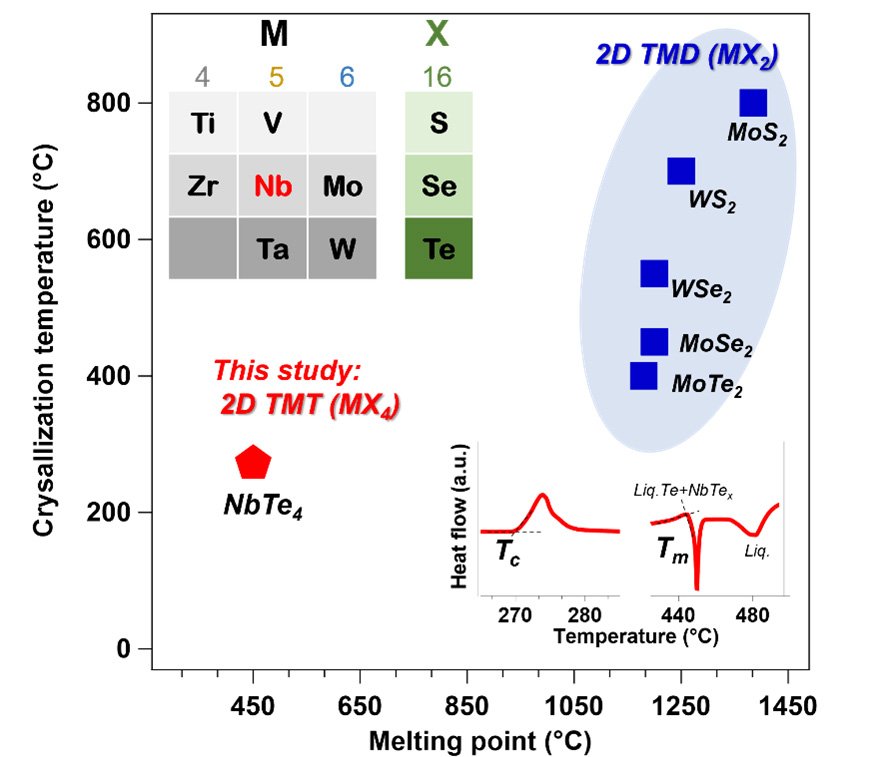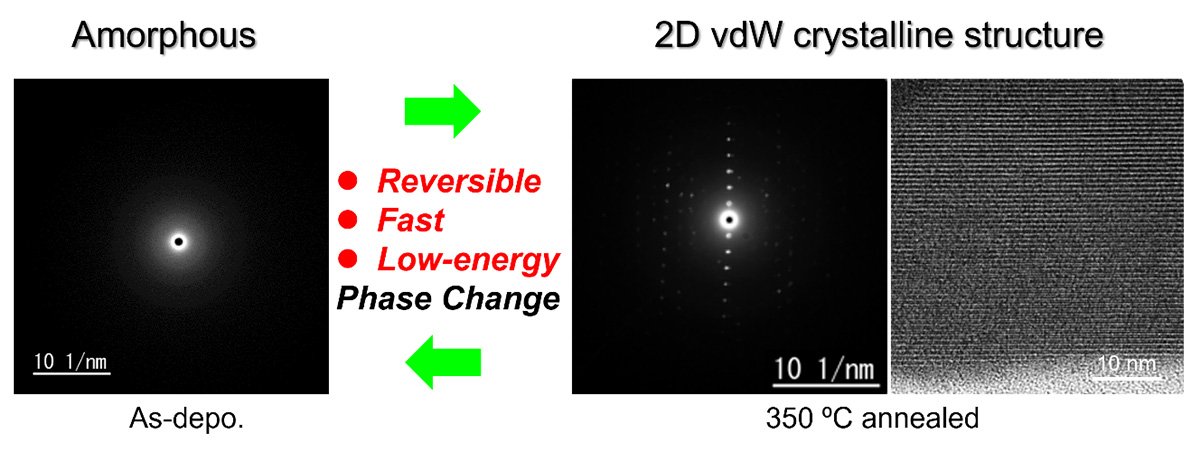
Material Shows Promise for Next Gen Memory Technology: Phase change memory is a type of nonvolatile memory that harnesses a phase change material’s (PCM) ability to shift from an amorphous state, i.e., where atoms are disorganized, to a crystalline state, i.e., where atoms are tightly packed close together. This change produces a reversible electrical property which can be engineered to store and retrieve data. Whilst this field is in its infancy, phase change memory could potentially revolutionize data storage because of its high storage density, and faster read and write capabilities. But still, the complex switching mechanism and intricate fabrication methods associated with these materials have posed challenges for mass production.
In recent years, two-dimensional (2D) Van Der Waals (vdW) transition metal di-chalcogenides have emerged as a promising PCM for usage in phase change memory. Now, a group of researchers from Tohoku University has highlighted the potential use of sputtering to fabricate large-area 2D vdW tetra-chalcogenides. Using this technique, they fabricated and identified an exceptionally promising materialーniobium telluride (NbTe4)ーthat exhibits an ultra-low melting point of approximately 447 ºC (onset temperature), setting it apart from other TMDs.
“Sputtering is a widely used technique that involves depositing thin films of a material onto a substrate, enabling precise control over film thickness and composition,” explains Yi Shuang, assistant professor at Tohoku University’s Advanced Institute for Materials Research and co-author of the paper. “Our deposited NbTe4 films were initially amorphous, but could be crystallized to a 2D layered crystalline phase by annealing at temperatures above 272 ºC.”
Unlike conventional amorphous-crystalline PCMs, such as Ge2Sb2Te5 (GST), NbTe4 demonstrates both a low melting point and a high crystallization temperature. This unique combination offers reduced reset energies and improved thermal stability at the amorphous phase.

Material Shows Promise for Next Gen Memory Technology: After fabricating the NbTe4s, the researchers then evaluated its switching performance. It exhibited a significant reduction in operation energy compared to conventional phase-change memory compounds. The estimated 10-year data retention temperature was found to be as high as 135 ºC – better than the 85 ºC of GST – suggesting an excellent thermal stability and the possibility of NbTe4 to be used in high-temperature environments such as in the automotive industry. Additionally, NbTe4 demonstrated a fast-switching speed of approximately 30 nanoseconds, further highlighting its potential as a next-generation phase change memory.
“We have opened up new possibilities for developing high-performance phase change memories,” adds Shuang. “With NbTe4‘s low melting point, high crystallization temperature, and excellent switching performances, it is positioned as the ideal material to address some of the current challenges face by current PCMs.”
Details of the group’s discovery were published in the journal Advanced Materials on June 20, 2023.

Publication Details:
Title: NbTe4 Phase-Change Material: Breaking the Phase-Change Temperature Balance in 2D van der Waals Transition-metal Binary Chalcogenide
Authors: Yi Shuang, Qian Chen, Mihyeon Kim, Yinli Wang, Yuta Saito, Shogo Hatayama, Paul Fons, Daisuke Ando, Momoji Kubo, and Yuji Sutou
Journal: Advanced Materials
DOI: 10.1002/adma.202303646
Material Shows Promise for Next Gen Memory Technology: Original Article
Metamaterials with Built-In Frustration have Mechanical Memory
Drexel develops ‘crystalsome’ polymer for improved intravenous drug delivery
IBM – A new brain-inspired architecture could improve how computers handle data and advance










